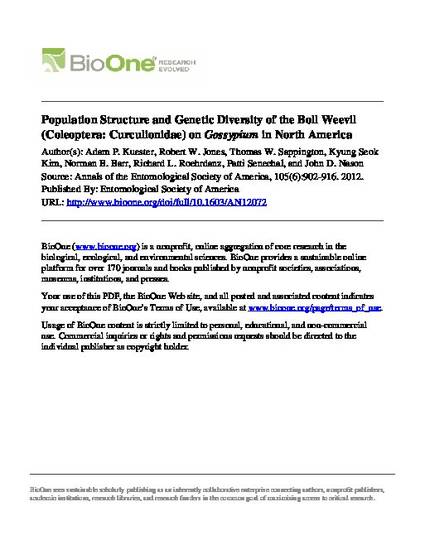
Although the boll weevil, Anthonomus grandis grandis Boheman (Coleoptera: Curculionidae), is a devastating pest in the United States and Mexico, its population structure and genetic diversity in Mexico on wild and cultivated cotton hosts (genus Gossypium) is poorly understood. Past studies using morphology, host use, and distribution records suggest that A.grandis grandis comprises three forms with host-associated characteristics: the southeastern form (from domesticated Gossypium hirsutum L., southeastern United States and northeastern Mexico), the thurberia form (from Gossypium thurberi Todaro, Arizona and northwestern Mexico), and the Mexican form (from multiple Gossypium species and other malvaceous plant genera in the remainder of Mexico and Central America). However, the phylogenetic relationships, host preferences, and distributions of these forms are not completely understood. An alternative hypothesis of an eastern and western form of the boll weevil is suggested by the suspected phylogeographic range expansion from an ancestral distribution in the tropics northward along both Mexican coasts, culminating in the maximally contrasting phenotypes observed in the northeastern and northwestern arms of the current distribution. In this study, we sequenced one mitochondrial and four nuclear genes to gain insight into the evolutionary relationships among the putative forms and their distributions on wild and domesticated cotton hosts. Using models of evolution, we compared the three-form to the two-form classification and to two alternative classifications that incorporate geography and host use traits. The genetic data at most loci provide stronger support for the two-form than the three-form hypothesis, with an eastern and western group separated by the Sierra Madre Occidental mountain range. They do not support separate taxonomic status for boll weevils developing onG. thurberi.
Available at: http://works.bepress.com/thomas_sappington/10/

This article is from Annals of the Entomological Society of America 105 (2012): 902, doi:10.1603/AN12072.